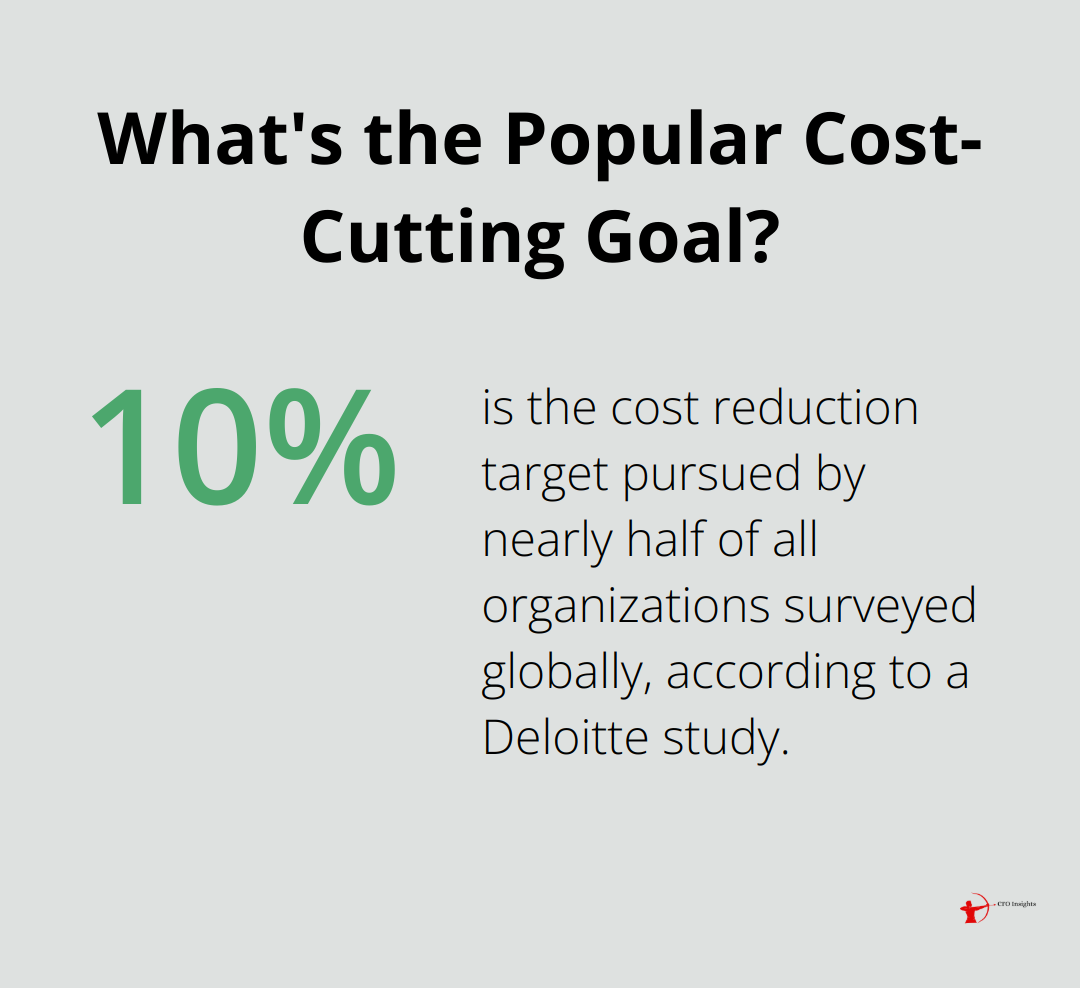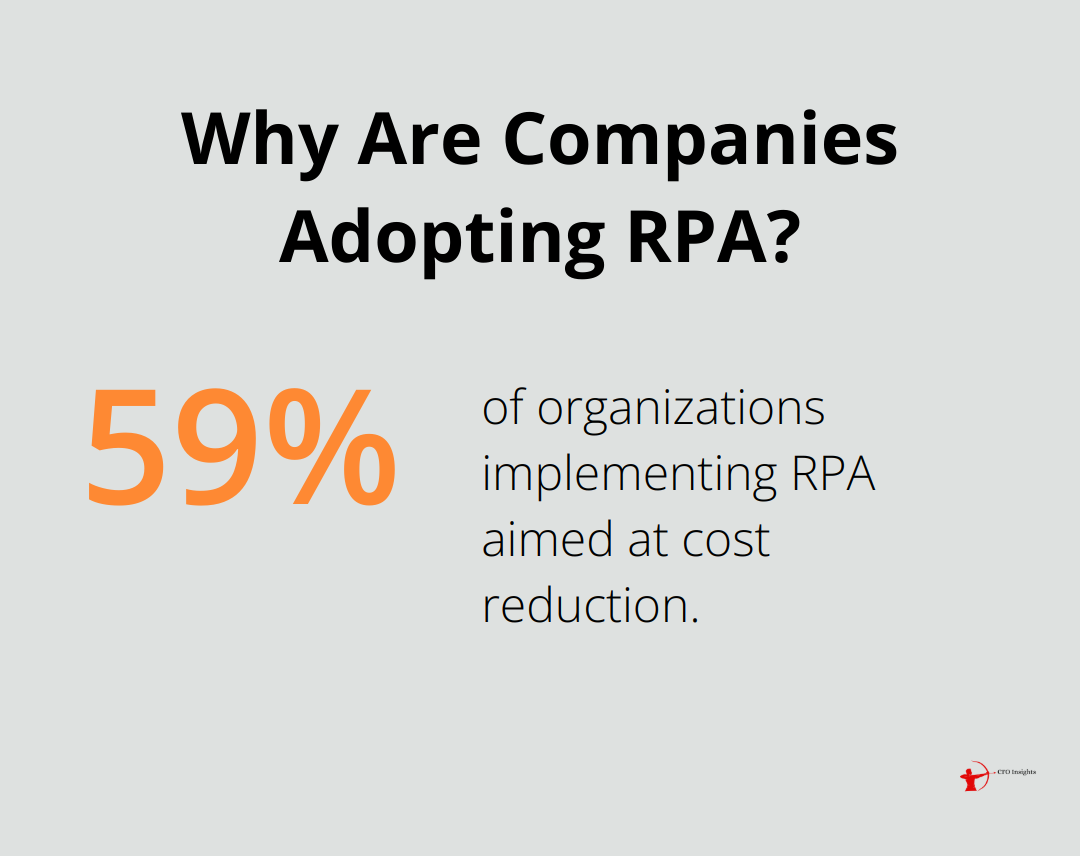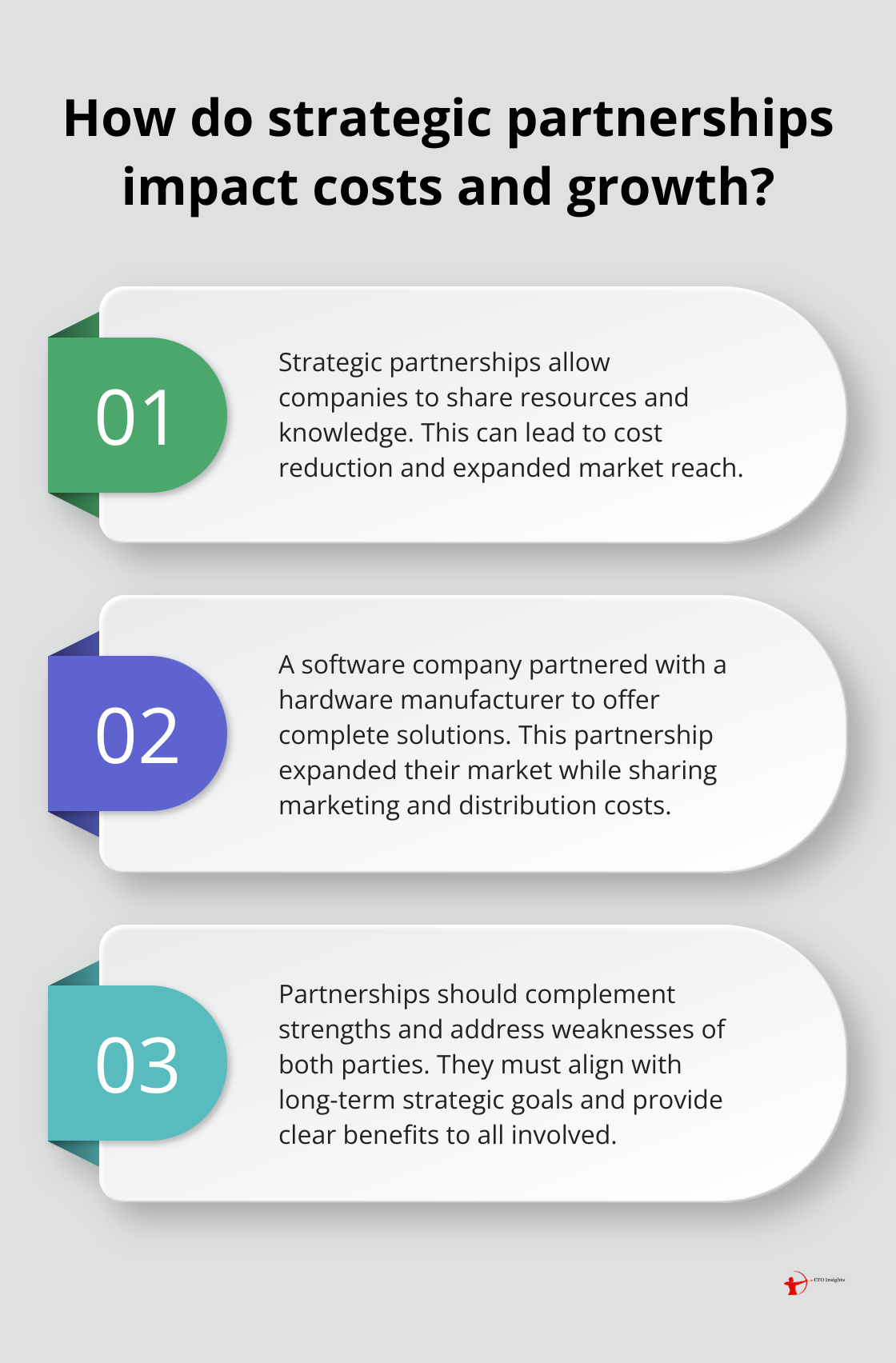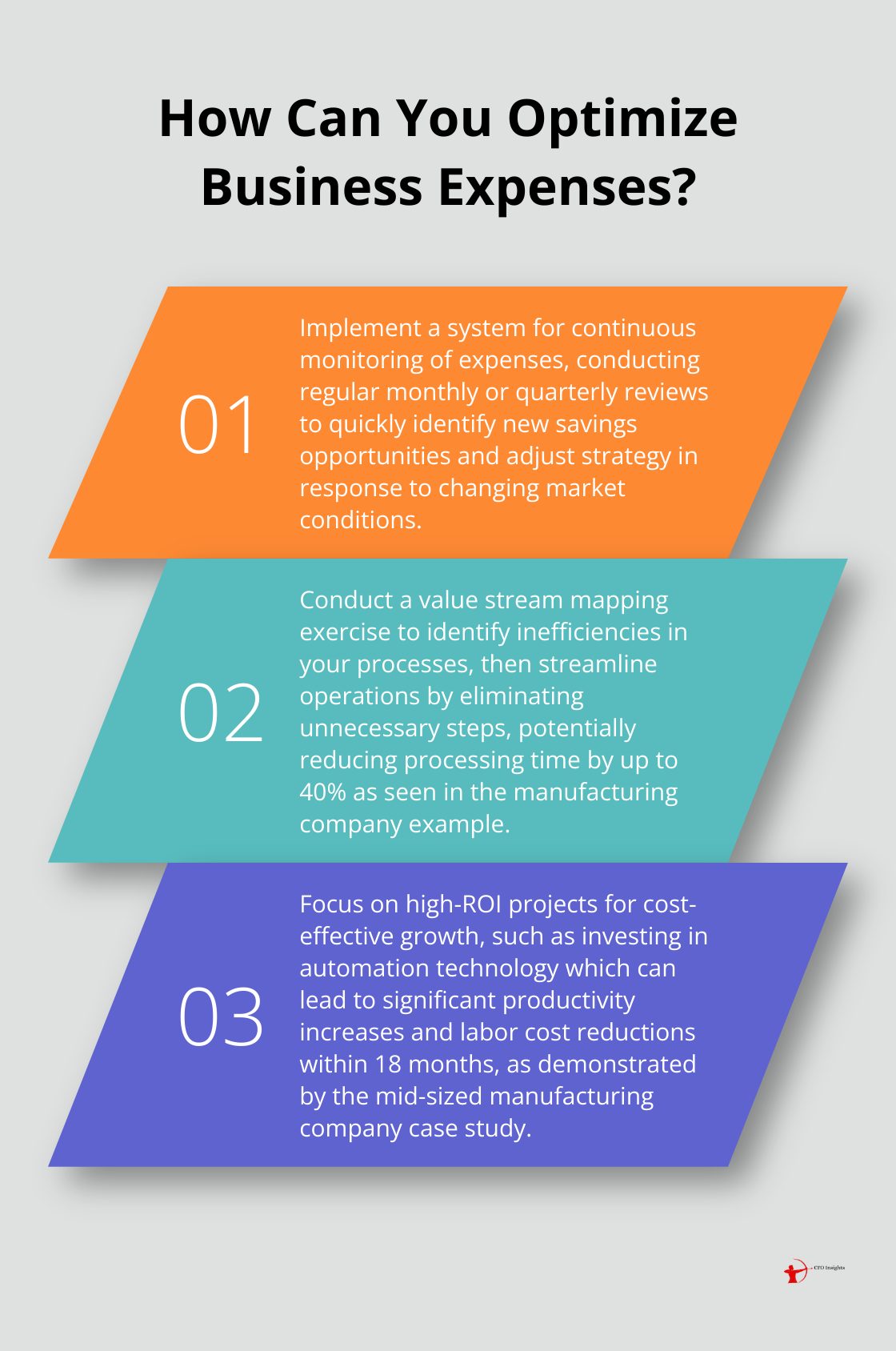At CFO Insights, we know that cost reduction is a top priority for many businesses. However, cutting expenses without a strategic approach can harm long-term growth.
In this post, we’ll explore how to implement smart cost-cutting measures while maintaining your company’s growth trajectory. We’ll share practical strategies to identify areas for savings, streamline operations, and invest in high-ROI initiatives.
Where Should You Cut Costs?
Analyze Your Expense Data
Effective cost reduction begins with a comprehensive understanding of your company’s spending patterns. This process involves making informed decisions that align with your business goals, rather than arbitrary cuts.

Start by categorizing all expenses and analyzing trends over time. Identify areas where spending has increased without a corresponding boost in revenue or productivity. Expense management software can automate this process, providing detailed reports and visualizations of your spending patterns.
A Deloitte study found that globally, nearly half of all organizations surveyed are pursuing cost reduction targets of less than 10%. This finding underscores the importance of setting ambitious yet achievable cost reduction goals.
Evaluate Impact on Business Operations
Not all expenses hold equal importance. Some are critical to your core operations, while others may be non-essential. Evaluate each expense category based on its impact on your business objectives. Consider these questions:
- How does this expense contribute to our revenue generation?
- What consequences would result from reducing or eliminating this expense?
- Are there more cost-effective alternatives that could deliver similar results?
This approach helps prioritize which areas to focus on for cost reduction without compromising your ability to grow and compete.
Leverage Predictive Analytics
Modern data analytics tools offer more than historical analysis. They predict future trends and simulate the impact of different cost-cutting scenarios. This capability allows for more strategic decisions about where to cut costs.
Predictive analytics can be used to help your company increase return on investment (ROI) through targeted marketing campaigns, improved risk assessment, and other strategic initiatives. This insight allows you to make targeted reductions that preserve your growth potential.
Implement Continuous Monitoring
Cost reduction isn’t a one-time event. It requires ongoing attention and adjustment. Implement a system for continuous monitoring of your expenses and their impact on your business performance. This approach allows you to:
- Quickly identify and address any unexpected negative consequences of cost-cutting measures
- Spot new opportunities for savings as they arise
- Adjust your strategy in response to changing market conditions
Regular reviews (monthly or quarterly) can help ensure that your cost reduction efforts remain aligned with your overall business strategy.
As we move forward, it’s important to consider how these cost-cutting decisions can be implemented effectively within your organization. In the next section, we’ll explore how to apply lean management principles to streamline processes and eliminate waste, further enhancing your cost reduction efforts.
How Can Lean Management Boost Your Bottom Line?
Streamline Your Processes
Lean management principles offer a powerful approach to reduce costs while maintaining growth potential. The first step in implementing lean management is to map out your current processes. This exercise often reveals redundancies and inefficiencies that you can eliminate. For example, a manufacturing company discovered that their approval process for purchase orders involved seven steps, three of which were unnecessary. By streamlining this process, they reduced processing time by 40% and freed up staff for more value-adding activities.

To identify areas for improvement in your own organization, consider a value stream mapping exercise. This technique employs a flow diagram of every step of a process to identify waste, reduce process cycle times, and implement process improvements.
Empower Your Employees
Your employees are often the best source of cost-saving ideas. They see inefficiencies that management might miss. Implementing a suggestion system can tap into this valuable resource. For instance, a retail company implemented an employee suggestion program that generated over $500,000 in savings in its first year.
To make this work, you must create a culture where employees feel comfortable sharing ideas. This might involve:
- Setting up a formal suggestion system with clear guidelines
- Recognizing and rewarding employees whose ideas you implement
- Providing regular feedback on suggestions (even if you don’t adopt them)
The goal is continuous improvement. Even small suggestions can add up to significant savings over time.
Leverage Technology for Efficiency
Technology plays a key role in lean management by automating repetitive tasks and providing data for decision-making. For example, robotic process automation (RPA) can handle routine financial tasks like data entry and reconciliation. Deloitte’s survey found that 59% of organizations implementing RPA aimed at cost reduction.
Another powerful tool is data analytics. By analyzing large datasets, you can identify patterns and trends that point to cost-saving opportunities. For instance, a logistics company used predictive analytics to optimize their delivery routes, reducing fuel costs by 15%.
When implementing new technology, focus on solutions that integrate well with your existing systems and provide a clear return on investment. CFO Insights helps clients evaluate and implement technology solutions that align with their specific needs and goals.
Lean management principles, when applied correctly, can significantly reduce costs without sacrificing growth. As you implement these strategies, keep in mind that lean management is an ongoing process of continuous improvement, not a one-time effort. In the next section, we’ll explore how to balance these cost reduction efforts with growth initiatives to ensure long-term success.
How to Balance Cost Cuts and Growth
Invest Wisely in High-ROI Projects
Not all investments yield equal returns. We advise our clients to focus on projects with the highest potential return on investment (ROI). This strategy allows companies to grow while keeping costs in check.

A mid-sized manufacturing company invested in automation technology for their production line. The initial cost was significant, but the ROI proved impressive. Within 18 months, they saw a 30% increase in productivity and a 20% reduction in labor costs. This investment not only cut costs but also positioned the company for future growth by increasing their production capacity.
When you evaluate potential investments, consider both short-term and long-term impacts. A project might not show immediate returns but could prove essential for long-term growth and competitiveness.
Prioritize Customer Retention and Acquisition
Growing your business doesn’t always mean finding new customers. It’s often more cost-effective to focus on retaining and expanding relationships with existing customers. Bain & Company reports that 53 per cent of marketing budgets is now devoted to existing customers.
Implement a customer relationship management (CRM) system to track customer interactions and identify opportunities for upselling or cross-selling. This approach can increase revenue from existing customers without significantly increasing costs.
For customer acquisition, focus on targeted marketing strategies. Use data analytics to identify your most profitable customer segments and tailor your marketing efforts accordingly. This targeted approach often yields better results at a lower cost than broad, untargeted marketing campaigns.
Leverage Strategic Partnerships
Strategic partnerships can serve as a powerful tool for both cost reduction and growth. One of the biggest benefits of a strategic partnership is the ability to share resources and knowledge between organizations.
A software company partnered with a hardware manufacturer. This partnership allowed them to offer a complete solution to their customers, expanding their market reach. At the same time, they shared marketing and distribution costs, reducing the financial burden on each company.
When you consider partnerships, look for companies that complement your strengths and can help you address your weaknesses. Ensure that the partnership aligns with your long-term strategic goals and that there’s a clear benefit for both parties.
Continuous Review and Adjustment
Balancing cost reduction with growth requires ongoing attention and adjustment. You should regularly review your strategies and prepare to pivot as market conditions change. This approach (which involves constant monitoring and flexibility) helps create a lean, efficient organization that’s well-positioned for sustainable growth.
Leverage Expert Guidance
For many organizations, navigating the balance between cost-cutting and growth can prove challenging. This is where expert guidance becomes invaluable. CFO Insights specializes in providing fractional CFO services. A skilled fractional CFO can help small businesses improve financial management, reduce costs, secure financing, and drive revenue growth – all without the financial commitment associated with a full-time hire.
Final Thoughts
Strategic cost reduction requires careful planning and execution to maintain growth potential. Companies must analyze spending patterns, use data analytics, and implement lean management principles to eliminate inefficiencies. This approach creates a leaner, more agile organization positioned for sustainable growth.

A skilled CFO provides strategic insight to navigate cost reduction initiatives while focusing on long-term growth objectives. At CFO Insights, we offer fractional CFO services to help businesses optimize their financial performance. Our team implements best practices in financial management, improves cash flow, and supports growth initiatives.
Cost reduction is an ongoing process that needs regular review and adjustment based on market conditions and business needs. With the right strategies and expert guidance, companies can achieve significant savings while positioning themselves for future success. Our fractional CFO services can help you balance cost reduction with growth objectives effectively.




